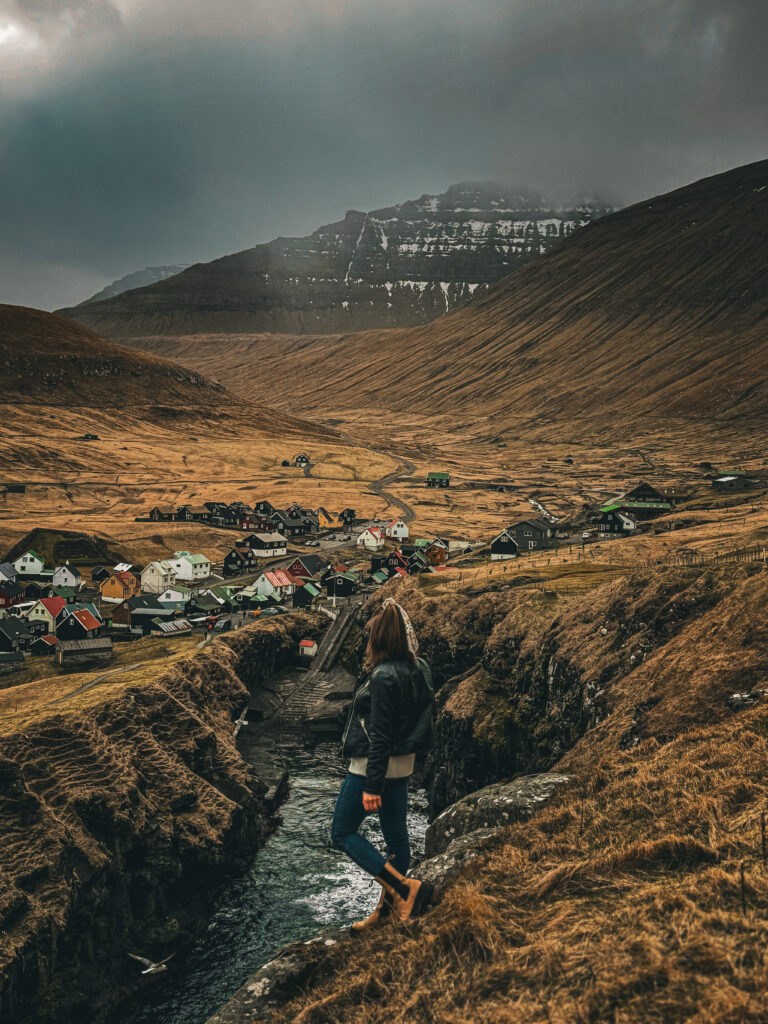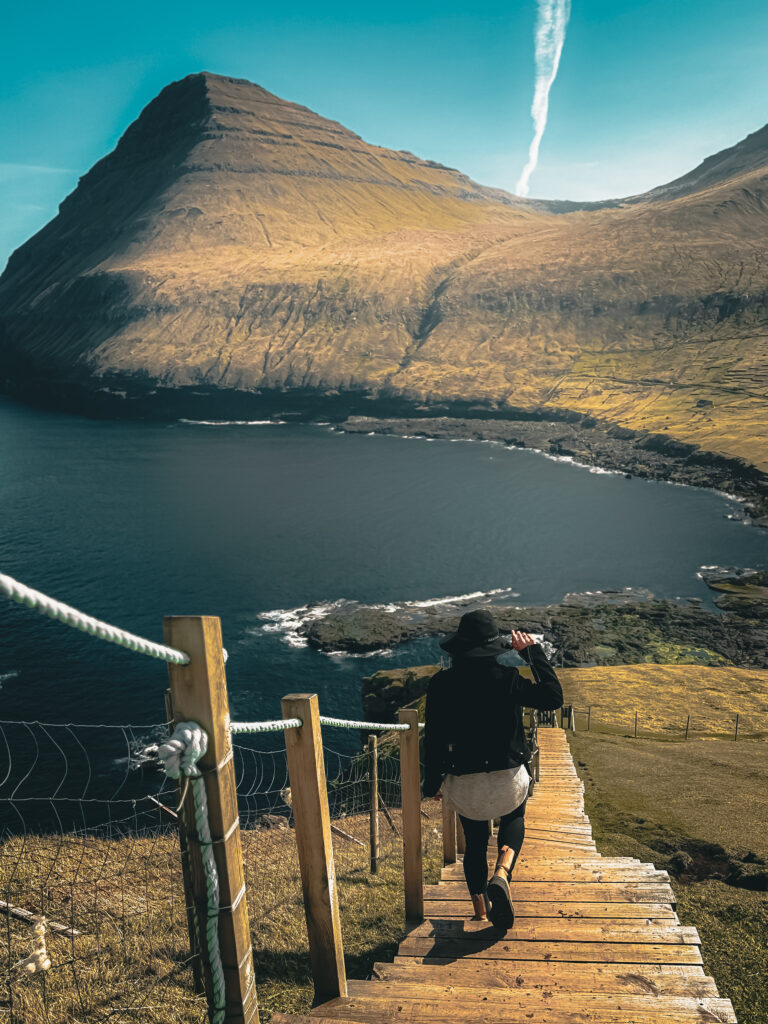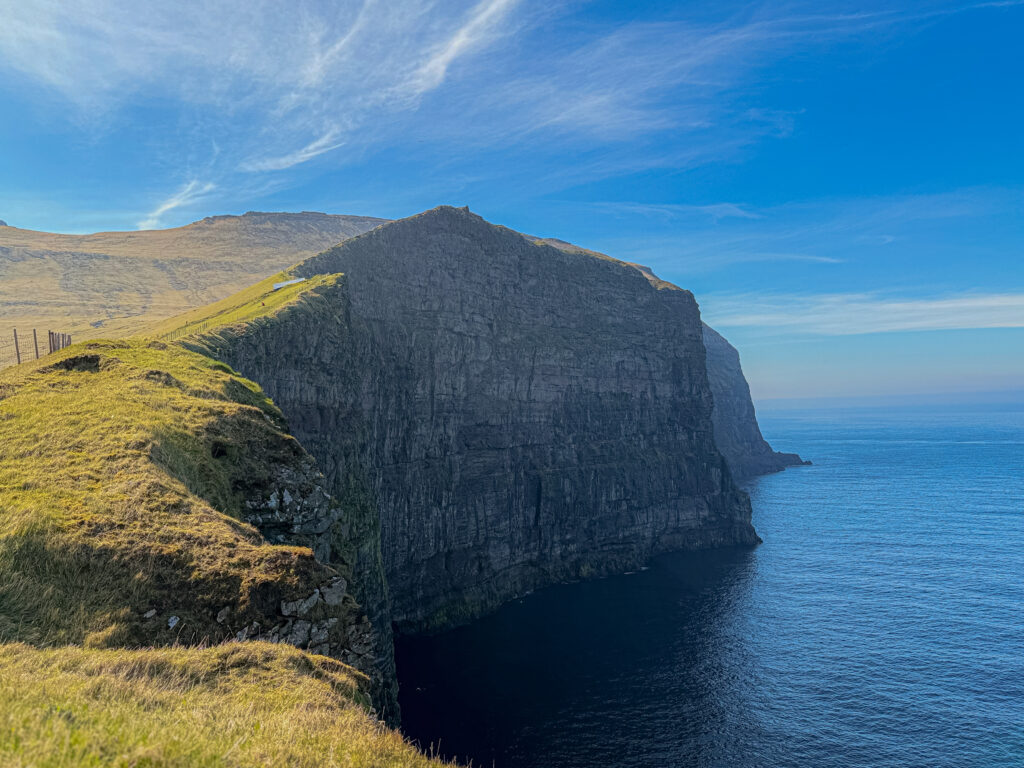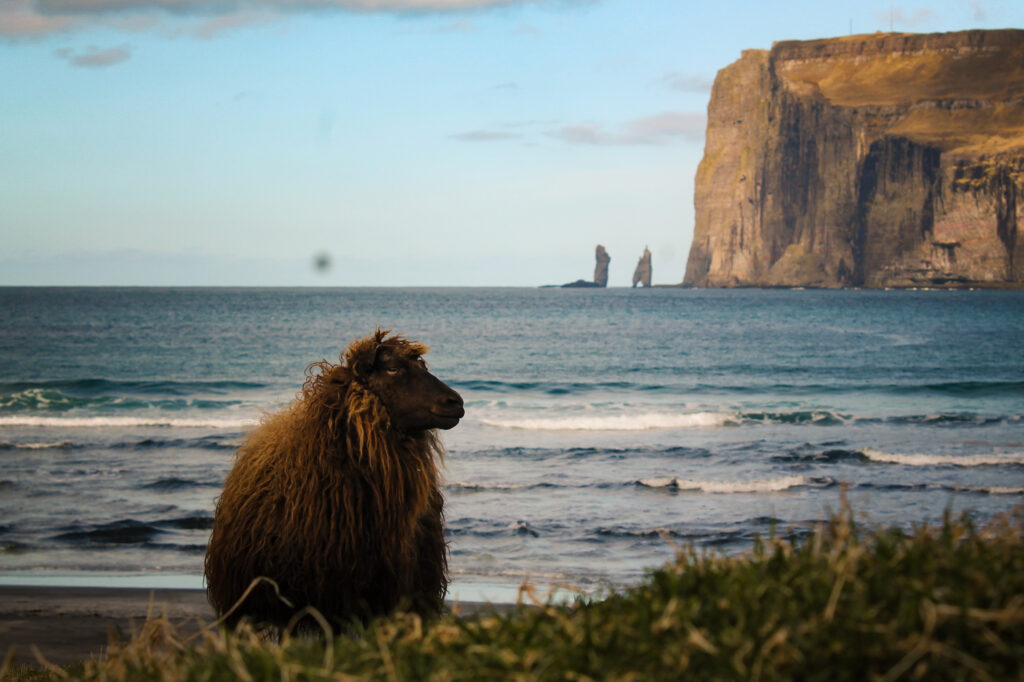
In the Faroe Islands, I’ve stopped doing many things. Carrying an umbrella. Rushing anywhere. Saying that THIS is my favorite place on the Islands. It also seems like I’ve stopped hearing in my left ear, probably a result of my several-month stint working behind the bar, which deprived me of many other sensory experiences (such as, sadly but truthfully, my sense of smell). Anyway. As much as I can, I avoid ranking Faroese spots on a podium. That’s because the group keeps growing significantly, encompassing an ever-larger part of the Islands, resulting in a truly absurd response along the lines of “I’ll take one of everything.” I can’t help it; it’s TOO beautiful here. Everywhere.
So today, let’s talk about more BEAUTIFUL places – ones that might become your favorites.
Gjógv: I no longer think I’m ready for it

And I’m not sure I ever will be, imho. Many things defy the standard definition in the Faroes, and for most of them, you can’t really prepare (read my post about what surprised me in the Faroes to understand what I mean). Gjógv is exactly that curiosity: a tiny village nestled in the folds of a valley, right at the edge of a ravine – from which it actually takes its name. Gjógv, awe-inspiring experience every time.

It seems like it could disappear into it any moment! Which, in fact, Gjógv has a tendency to do: in winter, it becomes an inaccessible place for people, covered evenly by snow drifts, empty and abandoned even by its residents, who move to more hospitable surroundings for the winter.


In spring, as the ice begins to melt and life slowly returns to the village, expect a riot of colors! And puffins! My beloved puffins have taken a liking to the surrounding cliffs and often gather there in groups, clumsily trotting along the edge.
What else is there to see in Gjógv? The view of the entire valley! The trek is incredibly easy and pleasantly short – although it might deplete your repertoire of curses given the number of stairs to climb. Oh, but it’s absolutely worth it.

I personally loooove driving to Gjógv! The road leading to the village is possibly my favorite (yeah, I know, I wasn’t supposed to say that). It winds through mountains, like tangled Christmas lights, requiring a similar amount of patience! Capriciously scattered bends, steep slopes, makeshift road protections, and passing places seemingly designed for sheep rather than, even for medium-sized cars. You don’t rush here. Besides, the views themselves won’t allow it; you feel like stopping every few meters.
Eiði : I no longer think football is a boring game anymore
At least when you plan in Eiði. This is because of the stadium’s rather unique location – I won’t go into details; you’ll have to see it for yourself!


Eiði itself is a village, hmm, not quite like any other in the Islands (maybe a tad busier, but in the Faroes, perceptions of crowds change, and with a population of 630 residents, you start feeling like you’re strolling down a bustling promenade in summer). However, Eiði’s ace in the hole is definitely its sports field!

The last match was played there years ago. Now it serves as a parking lot for vans and a playground for the local kids.

As a dedicated #waterfalllover, I adore wandering along Eiði’s coastline – rugged, untouched, and adorned with hidden nooks and crannies where small and large waterfalls glisten. Don’t just be a run-of-the-mill tourist; take a few extra steps beyond the field – it’s even more enchanting there.
Tjørnuvík : I stopped defining things “the usual way”
Returning from Eiði before turning towards Tórshavn, passing the Nordskáli bridge, turn right, and in just about 20 minutes, you’ll find yourself in a village nestled in the slopes of the surrounding mountains, Tjørnuvík, famous for surfers, giants, and waffles.

Tjørnuvík is currently home to 53 people, and the village itself is one of the oldest on the Islands. The church located there was moved from nearby Saksun – by the way, you can connect both villages by hiking, about a 3-hour walk and no hiking fee.


Surfers. Yes, Tjørnuvík is a paradise for surfers – decent waves and a sandy beach are a good start, right? If you’re a fan of the sport but don’t want to lug your own board, no worries, you can rent one locally!
Even if you’re not planning any extreme sports, the beach itself (did I mention it’s sandy? Not so obvious in Faroes! Traditional connotations from other parts of the world don’t apply here; the beach is often rocky, not sandy.) is worth a stop in Tjørnuvík. It’s incredibly picturesque and, I admit, lands in my top list of beaches!

Giants. I’m talking about two sea stacks emerging from the water on the horizon. These bizarre rock formations, Risin og Kellingin, according to legend, are two giants from Iceland who wanted to steal the islands. But they were less successful than Ibis aging and were caught by dawn. The sun turned them into two rocks, forever submerged in the water, unable to return to Iceland or steal the islands.


Waffles. There’s an elderly gentleman who opens something like a home cafe in the summer. He fries these mentioned waffles in the simplest waffle iron in the world and serves them with jam, namely rhubarb, homemade, and whipped cream. For the price of 8 euros (the gentleman is a traditionalist, but that doesn’t mean he’s not keeping up with the times – he accepts payment in two currencies, DKK and Euro), you get not only waffles and unlimited coffee refills but also the typical island hospitality and a sense of something that Norwegians call “koselig,” which is like a warm feeling in your heart when you eat grandma’s dinner.
Tjørnuvík itself fascinates me every time I’m there! Bathed in sunlight, it looks like a fairy tale, and in winter, when it doesn’t come here at all – high mountain masses surrounding the village don’t let sunlight in at all – it takes on an aura of unreality. And indeed, it is unrealistically beautiful!
Tjørnuvík also gets points from me for the road leading to it, just like in the case of Gjógv, it’s a narrow, single-car road along a cliff. Passing each other is possible every few meters, and even then, you can’t shake off that daunting awareness of the abyss gaping right beside you.
Things to remember: uphill traffic has the right of way! It’s harder for this driver to dodge or spot a car from a distance.
Dancing waterfalls? I stopped even tryin to understand…

I’m probably overusing the word “abstract” and all its synonyms, but the Islands are unquestionably an example of a place where unpredictability is a flagship product. Dancing waterfalls are further proof that even the laws of physics don’t apply in the Faroes. During storms (read: often), the wind is so strong that it doesn’t allow the water… to fall. It’s truly a theatrical spectacle, and with all due caution, I recommend traveling around the Islands to admire this one-of-a-kind view.
Fossa waterfall, located on the way from Tjørnuvík, is one of those places that look even better in bad weather!
It’s also worth stopping by when the weather is good! Its three-tier “construction” allows you to climb onto each “floor.”
Thanks for your attention; see you in the next post! Psst, let me know which place made it onto your Faroese bucket list!
xoxo, Alex



